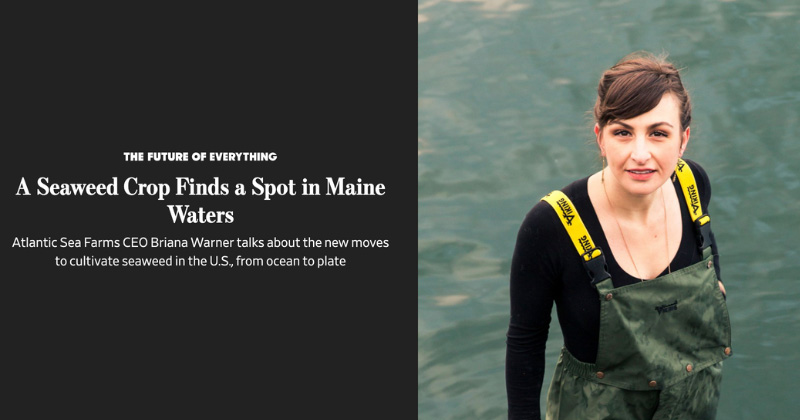Atlantic Sea Farms CEO Briana Warner talks about the new moves to cultivate seaweed in the U.S., from ocean to plate.
Seaweed is making its way into more foods, cosmetics and even pet kibble. In the U.S., most of that seaweed is imported from Asia; in 2019, the U.S. produced just 0.01% of the world’s seaweed.
Expanding seaweed aquaculture in the U.S. could provide an economic boost, particularly for fishermen whose livelihood might be threatened by the effects of climate change, proponents argue. As a crop, seaweed could also bring environmental benefits, like reducing ocean acidification and absorbing excess nutrients such as nitrogen and phosphorus that can be harmful to marine life—though some scientists question whether seaweed would continue to impart these benefits if grown at large scales.
Continue reading here.






